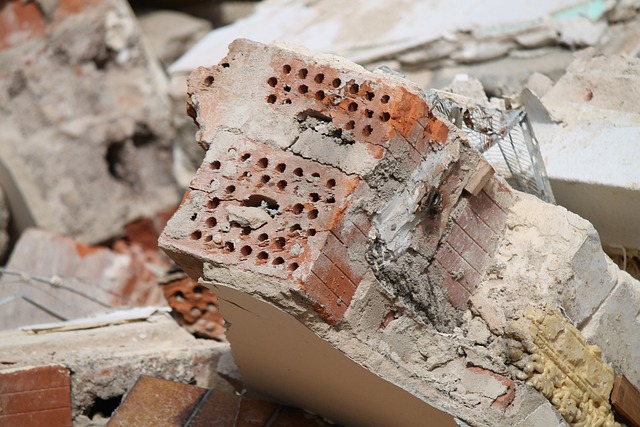Construction and demolition waste (C&D) is a category of waste generated during construction and demolition. CND waste can be made up of a variety of materials, including concrete, metal, wood, and plastic. In this blog post, we will provide an overview of what C&DW is and how it is typically disposed of. We will also discuss the different types of C&D and their benefits in your construction or demolition project. So whether you’re a contractor or homeowner looking to reduce the environmental impact of your construction project, this blog post is for you. Click here to learn more about best mobile rock crushers.
Construction and demolition waste at the glance
Construction and demolition waste, or C&D waste, is any waste generated during the process of constructing or demolishing a building. It can include materials such as wood, concrete, metals, and soil that are discarded while building or renovating a structure. C&D waste can consist of everything from old tile to broken floorboards. It is typically collected by contractors and disposed of in a separate facility from regular household garbage.
In most cases, C&D waste is environmentally safe and poses little to no environmental threat if properly handled. However, some specific types of C&D waste must be handled with care and caution to prevent health or environmental hazards. These include asbestos-containing materials, lead-contaminated materials, and certain types of oil-soaked materials (such as roofing tar).
Additionally, some kinds of C&D waste may require special disposal methods due to their chemical or corrosive properties (e.g., acids, caustics, or high-temperature metals). So it is important to research the best way to handle any particular type of C&D waste before disposing of it.
What construction and demolition waste does not include?
Construction and demolition waste is generated from various sources, such as residential and commercial building sites, road works, and other civil engineering projects. However, it is essential to note that some materials are not considered part of construction and demolition waste.
Typically, these include hazardous materials such as asbestos-containing materials (ACMs), plant debris from landscaping activities, and untreated wood from land clearing operations. In addition, some forms of organic material are excluded from the definition of construction and demolition waste, including soil, stone, and rock with no visible contamination or paint layers, compostable green waste, and environmental clean-up activities. Asbestos-containing materials, in particular, pose a significant safety risk to human health if not disposed of properly due to their carcinogenic properties.
What are the different types of demolition waste?
Demolition waste is often the result of large-scale construction projects. It can consist of a variety of materials, from concrete and drywall to wood and metal. Understanding the different types of demolition waste will help you ensure that the debris is managed appropriately for environmental and safety reasons.
The most common type of demolition waste is inert material such as bricks, blocks, tiles, pavement slabs, and soil. These materials are typically considered non-hazardous and can be recycled in a number of ways. However, some components may contain asbestos or other hazardous substances, which must be handled carefully by trained workers with the right equipment. Prevalent types of demolition waste include timber, furniture, plastics, and metals such as steel beams or aluminum window frames.
How do you dispose of C&D waste?
Construction and demolition waste (C&D Waste) is a significant portion of the solid waste stream, accounting for up to 30% of all refuse in the United States. Managing and disposing of C&D waste properly is essential to protecting our environment, preserving resources, and creating a more sustainable future.
Several methods can be used to dispose of C&D waste safely. These include sorting material for reuse or recycling, donating reusable goods to local organizations or donation centers, and utilizing an approved landfill facility for long-term disposal of non-reusable items. Sorting material for reuse or recycling helps reduce the amount of landfill waste as well as conserve natural resources. It is also important to adhere to local regulations regarding disposal requirements and permits when dealing with C&D waste.
The benefits of reusing C&D waste
The reuse of construction and demolition (C&D) waste is a growing trend that offers numerous benefits. As the world becomes increasingly aware of the need for sustainable practices, reusing C&D waste has become a favorable option for businesses, governments, and individuals. The main benefit associated with this practice is that it helps reduce the number of raw materials needed from natural resources. This reduces the environmental impact related to acquiring supplies from nature, such as deforestation and loss of biodiversity.
Reusing C&D waste also supports cost efficiency. By using recycled materials instead of buying new ones, organizations can save money on construction projects and other endeavors in which they’re involved. Additionally, recycling these materials can help to improve durability and reliability compared to brand-new products since they’re already designed to withstand heavy usage over time.
Why is construction and demolition waste management important?
Construction and demolition waste management is essential for several reasons. Firstly, it helps to reduce the amount of waste that can damage the environment if not handled correctly. It also allows construction projects to meet local and national regulations around waste disposal, ensuring these projects are completed in an environmentally responsible manner. Finally, waste management helps contractors save money by avoiding costly fines or penalties for improper disposal.
Managing construction and demolition (C&D) waste effectively requires good planning and organization during the preparation stage of a project. This includes researching local government regulations regarding C&D waste disposal and recycling, as well as setting up systems to track waste from its origin through collection, sorting, and transport to approved facilities. By understanding these procedures ahead of time, contractors can ensure they are well-prepared to handle C&D materials properly throughout every step of their project.
